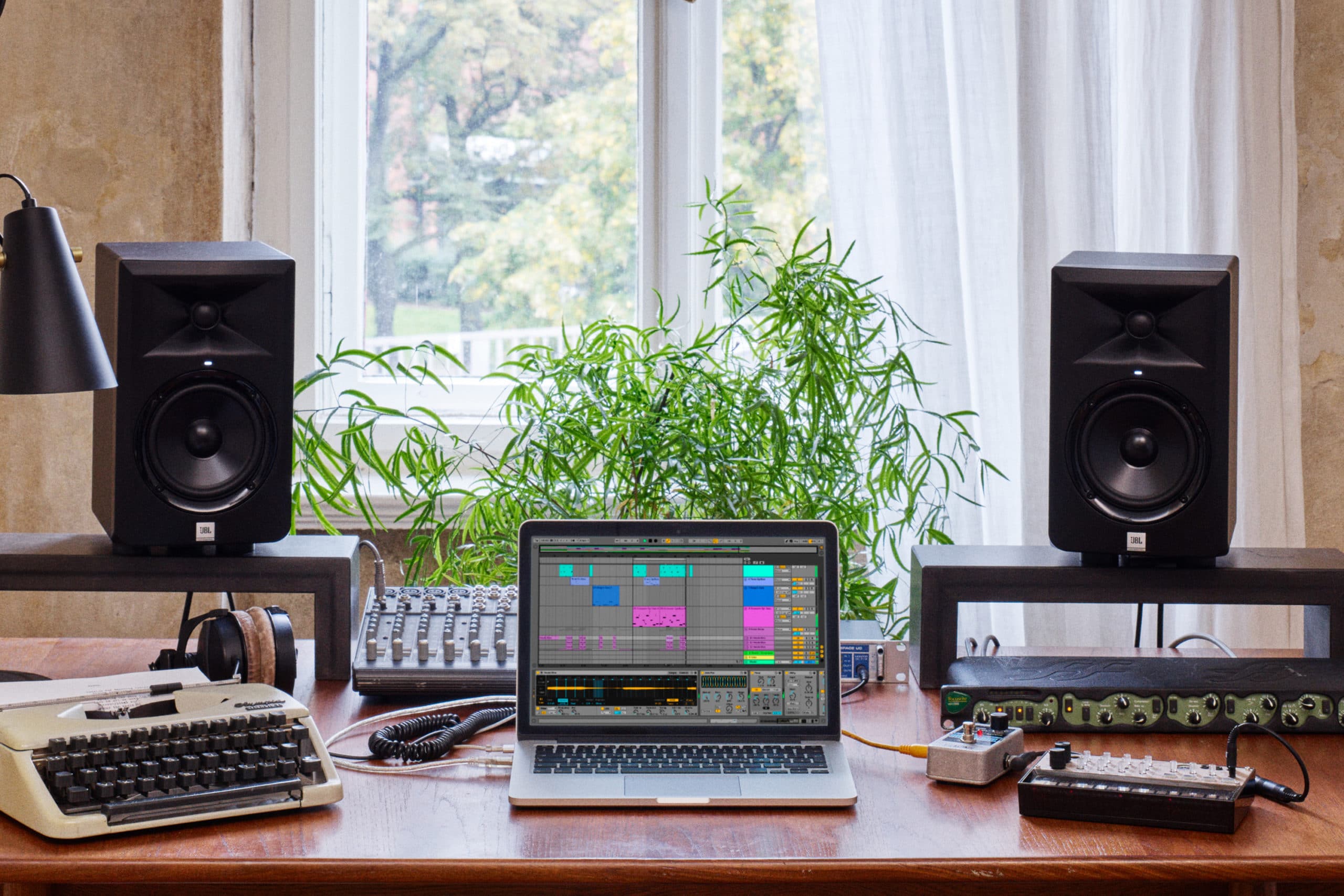Drum Miking Techniques
Drum Miking Techniques: Recorder Man and Glyn Johns
Katie Gilchrest’s take on drum miking techniques
Many considered the drum set one of the hardest pieces of equipment to mic in a studio. A drum kit is not one instrument, but a collection of multiple instruments, featuring a wide variety of different timbres depending on each individual drummers setup. One can go as complicated or simple with microphone positions depending on the sonic end goal. The following techniques present tried and true methods for miking drums with a limited amount of microphones, as well as important concepts to keep in mind. These techniques can be used a basis for more complicated setups in the future.
Before miking drums, it is important to understand phase. The general rule of thumb is, the more microphones you add, the more phase problems that are likely to occur. Phase issues can manifest as comb-filtering with decreased bass response, tinny-ness in the upper frequencies, and “whooshing” sounds. Even distances between microphones will greatly decrease this phenomenon. If you don’t have a tape measure handy, an XLR cord will do. Specifics on measuring will be described with each drum miking technique.
RECORDER MAN
This is a two-microphone method which provides a natural, balanced stereo image of the kit without a lot of room sound. The kick and snare are very prevalent with this technique. The best outcome for Recorder Man is to use a matched pair of microphones, preferably condenser, and the key is to carefully measure distances between the two mics.
The first mic is to be placed directly above the snare. Measure the distance from the center of the snare with the length of two drumsticks, straight up in the air.
The second mic is the “over the shoulder mic.” Position this mic behind the drummers right shoulder if he/she is right-handed (left shoulder if left handed). This microphone can be pointed directly at the snare or where the beater hits the bass drum. Somewhere in the middle is okay too. Check the positioning by measuring, again, with the length of two drumsticks from the middle of the snare.
Measuring these microphones equidistant from the snare ensures that its position in the stereo image is centered. Also, the snare and kick drum will be in phase, which will limit audible decimation from phase cancellations.
Finally, using a mic chord, measure the distance from the center of the bass drum to the bottom edge of your first overhead. Using the rest of the chord hanging from the mic, hold that length down to the center of the snare. There should be a triangle shape. You can then move the point you are holding by the mic to the second overhead to check that the distance is the same. If not, adjust to make the distance to the second mic equal. You will probably need two people for this last measurement.
Recorder Man can easily be supplemented with spot mics, but positioning your overheads is the key to getting a great sound.
Glyn Johns was an engineer and musician who produced and record great records for bands such as Led Zeppelin, The Eagles, Eric Clapton and the Rolling Stones. He developed a reputation for capturing a huge drum sound in the studio with only four microphones.
Similarly to Recorder Man, the idea is to achieve a big overall picture with the overheads. Again, these are a matched pair, preferably condenser. The first overhead is positioned about three or four feet directly above the snare. It is advised to record drums in this position and listen back for balance of the whole kit. Once you have adjusted for a natural image of the cymbals, snare and toms, it is time to put up the second overhead. This microphone should be placed about six inches or so above the floor tom, pointed towards the hi-hat. It is important to make sure both these microphones are equidistant from the center of the snare. You can measure these distances with a mic cable or tape measure. When listening to a stereo playback of this position, there should be a nice balance of all drums, with the snare in the center.
Once the overheads sound good, a couple of spot mics on the snare and kick are used to add snap and precision. These positions are up to taste, but generally, the snare mic, preferably a dynamic mic, is placed just over the rim, angled towards the center. The kick can be close miked right up to the skin or even inside the drum with either a dynamic or condenser.
Unlike the Recorder Man, the Glyn Johns’ drum miking techniques partially relies on the room. He tended to record in large rooms with great acoustics, and while you can still get a good sound in a small space, a great sounding room will strengthen your recording.
Using these two drum miking techniques as a basis, you are on your way to providing a natural, large sound backbone to your recordings. Remember that microphone widths can be changed and rules broken. Ultimately the distances and angles are up to your own taste, and always use your ears as a guide while experimenting with drum miking techniques.


